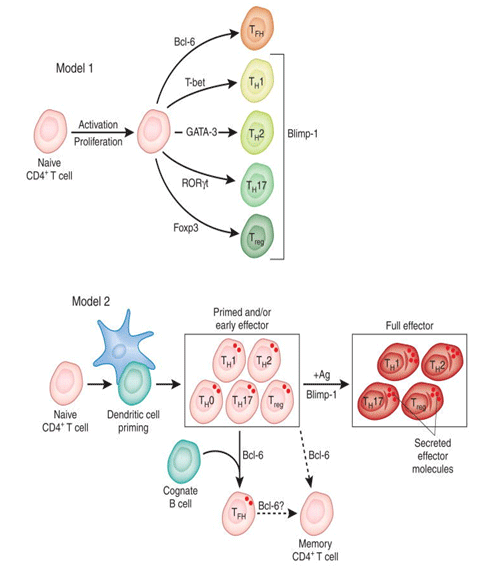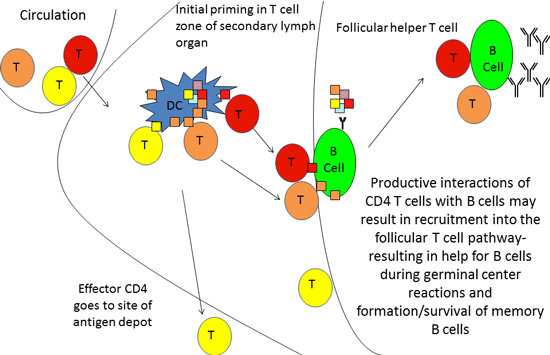URMC / Labs / Sant Lab / Projects / Follicular CD4 T Cells in Response to Protein Vaccination and Influenza Infection
The Specificity and Function of Follicular CD4 T Cells in Response to Protein Vaccination and Influenza Infection
The production of high affinity, isotype switched antibodies in response to vaccines or pathogens depends on B cell interaction with antigen-specific CD4 T cells in the germinal centers of the peripheral lymphoid organs. It is now known that this activity is mediated by a specialized subset of CD4 T cells termed follicular helper T cells (Tfh) that are characterized by the expression of a subset of cell surface markers that promote the ability of the CD4 T cells to help B cells and to localize to the B cell follicles and participate in the germinal center reaction.

T follicular helper cell models. TfH localize to B cell zone of secondary lymphoid organs, and supply cognate help to B cells for generation of high-affinity, isotype-switched antibody and potentially B cell memory function. Adapted from: Crotty, Roles of Bcl6 and Blimp1 in CD4 T follicular helper (Tfh) lineage commitment, 2010.
In the last five years, much progress has been made in the identification of unique markers and transcription factors that identify antigen TfH and so it is now feasible to track this particular cell type during immune responses and evaluate their quantity, antigen specificity, and effector phenotype in order to determine if this is the best predictor and correlate of a protective antibody response to pathogens and vaccines. Thus far, analysis of CD4 T cells specificity and function in humans has involved analysis of unfractionated CD4 T cells of which only a small fraction may be relevant to B cell responses. Our laboratory has recently used preparative flow cytometry and in vitro cytokine EliSpot assays to purify and analyze the function and specificity of TfH in response to antigen and influenza pathogen challenge. Current experiments focus on studying the protein and specificity of TfH elicited after protein vaccination or infection with influenza virus.

Priming events in the draining lymph node after immunization.